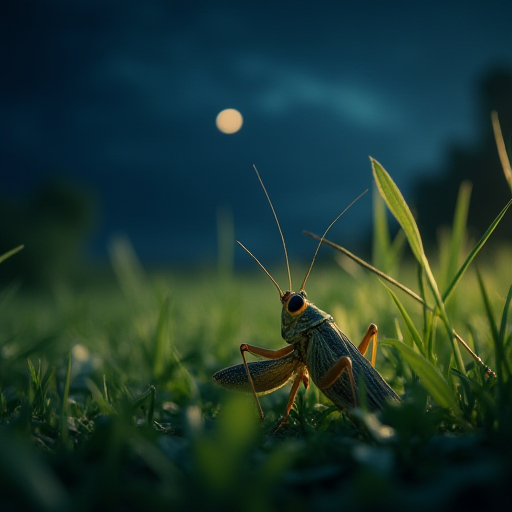
Why Do Crickets Chirp?
Crickets are fascinating creatures, and one of their most intriguing behaviors is their characteristic chirping. This sound, often associated with warm summer nights, serves several essential purposes in the life cycle of crickets. Understanding why crickets chirp requires delving into their biology, communication methods, and environmental interactions. In this article, we will explore the reasons behind cricket chirping, how they produce these sounds, and their significance in the ecosystem.
The Science Behind Cricket Chirping
Anatomy of a Chirp
Crickets produce their signature sound through a process known as stridulation. This involves rubbing certain body parts together to create noise. Specifically, male crickets have specialized wings that play a crucial role in this process. One wing has a serrated edge, much like a comb, called the "file," while the other wing acts as a "scraper." When the cricket raises and lowers its wings, the scraper moves across the file, producing the familiar chirping sound. The sound is amplified by the wing itself, which acts as a natural resonating body.
Purpose of Chirping
-
Mating Calls: The primary reason crickets chirp is to attract females for mating. Male crickets are the ones that chirp, and each species has its unique song, which females recognize. This ensures that they attract mates of the same species. The song's structure, frequency, and volume provide females with information about the male's health, vitality, and genetic suitability.
-
Territorial Claims: Crickets also use chirping to establish and defend territories. A strong, continuous chirp indicates to other males that a territory is occupied. If another male encroaches, the resident cricket may increase its chirping frequency or engage in aggressive behavior to ward off the intruder.
-
Environmental Indicators: Interestingly, the chirping rate of crickets can also provide clues about environmental conditions, such as temperature. This phenomenon is known as Dolbear's Law, which states that the rate of chirping is correlated with temperature. By counting the number of chirps in a set period and applying a simple formula, one can estimate the ambient temperature with surprising accuracy.
Ecological Importance
Crickets play a crucial role in their ecosystems. Their chirping is more than just a mating call; it contributes to the ecological balance. Here's how:
-
Indicator Species: Crickets can be considered indicator species, meaning their presence and behaviors can reflect the health of the environment. Changes in chirping patterns can indicate shifts in climate or habitat quality.
-
Food Chain Contribution: Crickets are a vital food source for many predators, including birds, small mammals, and other insects. Their abundance and health impact the survival of these predators, showing the interconnectedness of the ecosystem.
-
Soil Aeration and Decomposition: As crickets dig and move through the soil, they contribute to aeration, which helps plant growth. Additionally, their diet primarily consists of plant matter and detritus, aiding in decomposition and nutrient cycling.
Human Interaction and Cultural Significance
Crickets have caught the human imagination for centuries, often symbolizing luck, prosperity, and vitality in various cultures. In some Asian countries, crickets are kept as pets and are part of traditional practices. Their sounds are often associated with calm and peaceful nights, providing a natural soundtrack that many find soothing.
Conclusion
Cricket chirping is a multifaceted behavior with biological, ecological, and cultural significance. Understanding why crickets chirp offers insights into their role in nature, their communication strategies, and their interactions with the environment. Whether you're enjoying the sound on a summer evening or studying their patterns for scientific research, crickets and their chirps continue to fascinate and inform us about the natural world.
